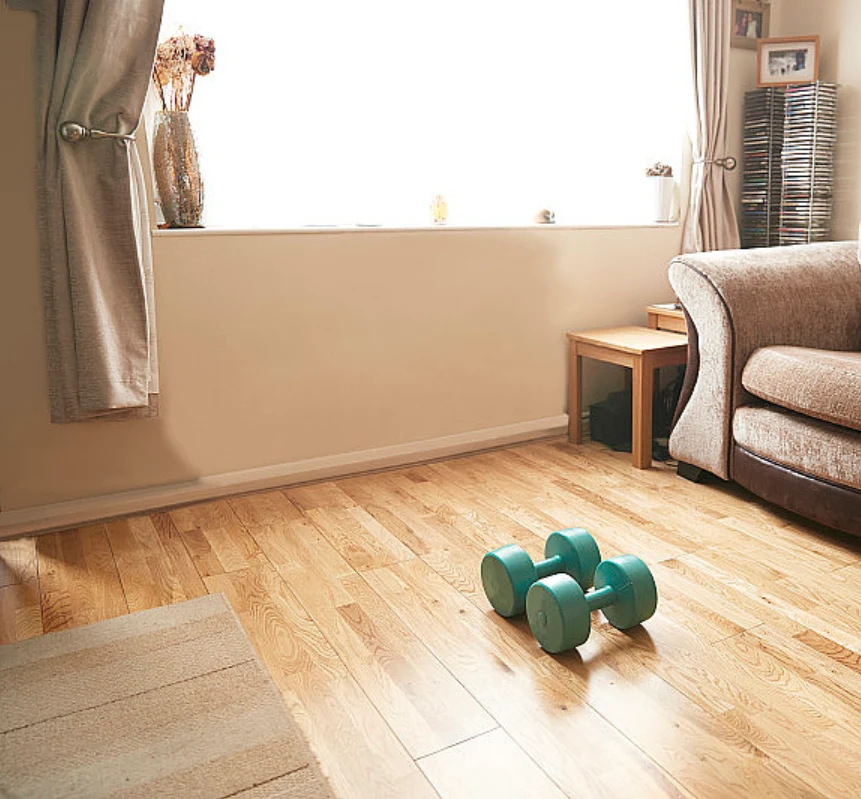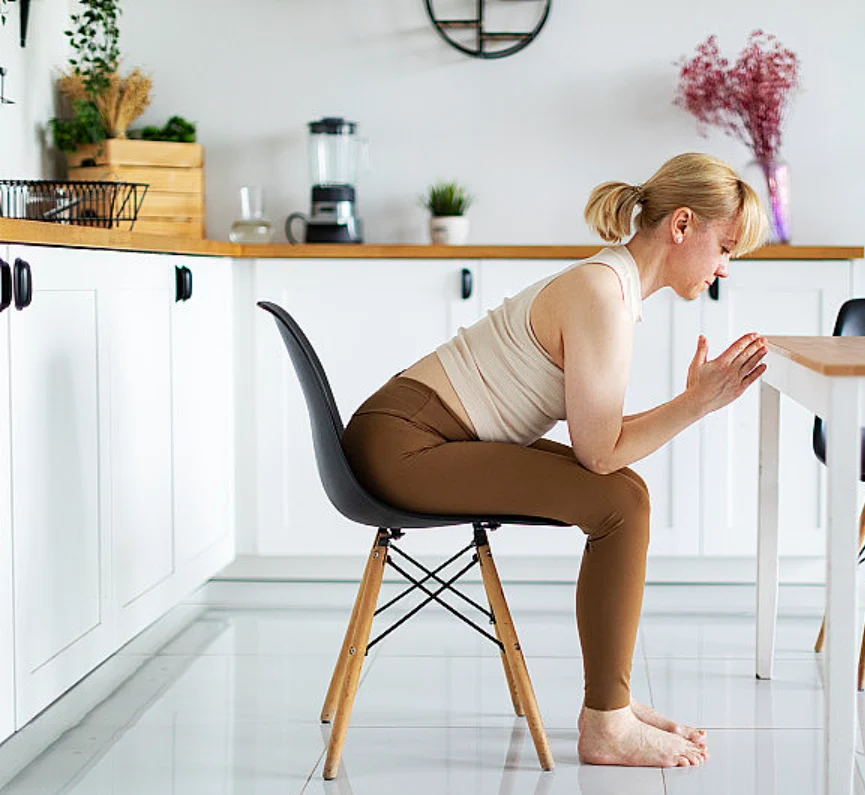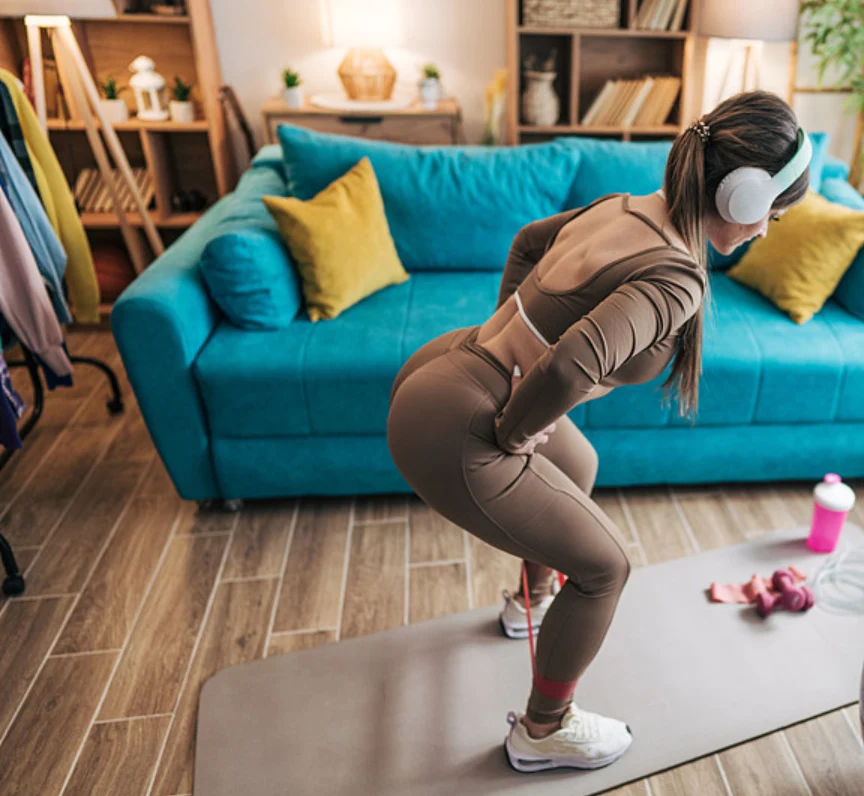What is Micro-Fitness?
Micro-fitness is a health management approach that involves engaging in physical activity during short time segments, typically lasting 5-10 minutes or even less. Its core idea is to make use of fragmented time in daily life—such as breaks between work tasks, waiting for the bus, or watching TV—to perform simple exercises like jumping, squats, or stretching. This method is especially suitable for people who struggle to find large blocks of time for traditional long-duration workouts, including busy individuals and low-vision individuals, who may prefer or need to exercise in safe, familiar spaces rather than outdoors or in intense settings.
Why is Micro-Fitness Popular?
 Micro-fitness has gained widespread popularity due to its flexibility and efficiency, addressing the challenges of modern, fast-paced lifestyles where carving out extended time for the gym is often impractical. Here’s why it’s trending:
Micro-fitness has gained widespread popularity due to its flexibility and efficiency, addressing the challenges of modern, fast-paced lifestyles where carving out extended time for the gym is often impractical. Here’s why it’s trending:
- Adaptability to Busy Schedules: With time being a scarce resource, micro-fitness allows people to stay active without needing hours of commitment.
- Social Media Influence: Platforms like Instagram and YouTube feature short fitness tutorials from influencers, making it easy for anyone to try. For low-vision individuals, advancements in technology, such as voice-controlled audio workouts, enable them to follow along safely.
- Scientific Backing: Studies show that short bursts of high-intensity interval training (HIIT)—a foundation of micro-fitness—offer health benefits comparable to longer workouts, such as improved cardiovascular health and fat burning, driving its appeal.
The rise of remote work and flexible schedules, especially post-pandemic, has further boosted its popularity by providing more opportunities to integrate micro-fitness into daily routines at home.
Scientific Basis: Benefits of Short-Duration Exercise
The effectiveness of micro-fitness is grounded in robust scientific research, particularly around high-intensity interval training (HIIT) and the physiological benefits of brief exercise:
- Muscle and Mitochondrial Health: A study from the Journal of Physiology found that just 6 minutes of HIIT per week can enhance muscle health and mitochondrial function, which is critical for energy production.
- Cardiovascular and Metabolic Benefits: Research from the University of British Columbia (UBC) shows that HIIT matches traditional endurance training in improving heart function and blood pressure control, but with a lower time commitment.
- Post-Exercise Calorie Burn: Short, intense exercise activates the anaerobic energy system, triggering the Excess Post-Exercise Oxygen Consumption (EPOC) effect. This keeps metabolism elevated after the workout, burning more calories even in just a few minutes.
- Reduced Mortality Risk: According to Vogue, even 2 minutes of exercise can lower the risk of premature death, reinforcing the value of short sessions.
- Breaking Sedentary Habits: Healthline reports that multiple 2-5 minute workouts daily can match the benefits of a single long session, reducing chronic disease risks tied to prolonged sitting.
These findings make micro-fitness a compelling, evidence-based option for health improvement with minimal time investment.
Practical Tips: How to Incorporate Micro-Fitness into Daily Life
 To make micro-fitness work, it’s about finding the right activities for your schedule and weaving them into your routine. Here are actionable suggestions:
To make micro-fitness work, it’s about finding the right activities for your schedule and weaving them into your routine. Here are actionable suggestions:
General Strategies
- Spot Fragmented Time: Identify small gaps in your day—like a 10-minute walk after lunch, 5-minute stretch between meetings, or 5-minute deep breathing before bed.
- Match Activity to Time: For 5 minutes, try bodyweight exercises (e.g., push-ups: 30 seconds on, 30 seconds rest, repeat 3 times). For 10 minutes, opt for a Tabata workout (e.g., 20 seconds jumping, 10 seconds rest, repeat 8 times, then stretch).
- Build a Habit: Pick a consistent time, like morning squats or post-dinner walks. Research suggests it takes 21 days to form a habit—consistency is key.
- Get Creative: Add movement to daily tasks—leg lifts while brushing teeth, squats while microwaving, or mountain climbers during TV ads.
- Leverage Technology: Use apps like Active8me or Keep for short workout plans, or set reminders to stay on track.
Scenario-Specific Activities
Here’s a table of micro-fitness ideas tailored to common daily moments:
| Scenario | Suggested Activities | Time |
|---|---|---|
| Work Break | Desk stretches, push-ups, leg lifts | 5 minutes |
| Waiting (Bus/Queue) | Toe stands, squats, brisk walking | 2-5 minutes |
| TV Ad Breaks | Jumping, sit-ups, mountain climbers | 3 minutes |
| Before Bed | Yoga stretches, deep breathing | 5 minutes |
| Commuting | Take stairs, brisk walking | 10 minutes |
| Long Work Sessions | Twist torso, bend, neck rolls | 2-5 minutes |
Considerations for Low-Vision Individuals
For those with low vision, safety is paramount. Perform exercises in a familiar, clutter-free space to avoid hazards. Adapt movements—swap jumping for calf raises with squats, or replace squats with lunges—to ensure comfort and security while still reaping benefits.
Conclusion and Motivation
 Micro-fitness offers a practical, efficient way for today’s busy individuals—whether professionals, parents, students, or those with low vision—to manage their health. By leveraging fragmented time for short workouts, you can improve heart health, metabolism, and reduce sedentary risks. Science proves that even a few minutes daily can make a difference; the key is persistence and creativity.
Micro-fitness offers a practical, efficient way for today’s busy individuals—whether professionals, parents, students, or those with low vision—to manage their health. By leveraging fragmented time for short workouts, you can improve heart health, metabolism, and reduce sedentary risks. Science proves that even a few minutes daily can make a difference; the key is persistence and creativity.
Start today with a simple 5-minute activity—stretch indoors or take a quick walk. Small steps lead to big changes. Let’s move toward a healthier life together!
FAQs:
1. What is micro-fitness, and how can it benefit individuals with low vision?
Micro-fitness refers to engaging in short, high-intensity exercise sessions that can be seamlessly integrated into daily routines. For individuals with low vision, these brief workouts can be performed safely in familiar environments, reducing the need to navigate unfamiliar or potentially hazardous spaces. This approach allows for maintaining physical activity without the challenges associated with traditional, longer exercise routines.
2. What types of exercises are suitable for micro-fitness routines for those with low vision?
Suitable exercises include:
Stationary Cycling: Utilizing a stationary bike provides cardiovascular benefits without requiring navigation, making it a safe indoor option.
Weight Training: Performing weightlifting exercises can enhance muscle strength and overall fitness. This activity can be safely conducted in a controlled environment, minimizing the risk of injury.
Yoga: Engaging in yoga can improve flexibility, balance, and mental well-being. It can be practiced at home with minimal equipment, offering a safe and effective exercise option.
3. How can individuals with low vision safely incorporate micro-fitness into their daily routines?
To safely engage in micro-fitness:
Consult Healthcare Professionals: Seek guidance from eye care specialists or rehabilitation professionals to tailor exercise plans to individual needs.
Create a Safe Exercise Space: Ensure the workout area is free from obstacles and hazards to prevent injuries.Rejoin Tech
Use Assistive Devices: Employ appropriate assistive devices or modifications to facilitate safe exercise participation.
4. What are the psychological benefits of micro-fitness for individuals with low vision?
Engaging in regular physical activity, including micro-fitness, can:
Enhance Mental Well-being: Exercise is known to improve mood and reduce symptoms of depression and anxiety.
Boost Confidence: Achieving fitness goals can increase self-esteem and promote a sense of accomplishment.
Foster Social Interaction: Participating in group activities or classes can provide opportunities for social engagement, reducing feelings of isolation.
5. Are there community resources available to support individuals with low vision in engaging in micro-fitness?
Yes, various resources are available, including:
Rehabilitation Services: Organizations offer programs that include exercise training tailored to individuals with low vision.
Support Groups: Connecting with local or online communities can provide shared experiences and motivation.
Adaptive Fitness Classes: Some fitness centers offer classes specifically designed for individuals with visual impairments, providing a safe and supportive environment for exercise.

